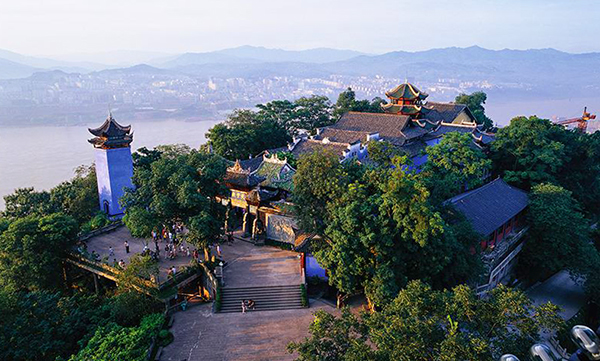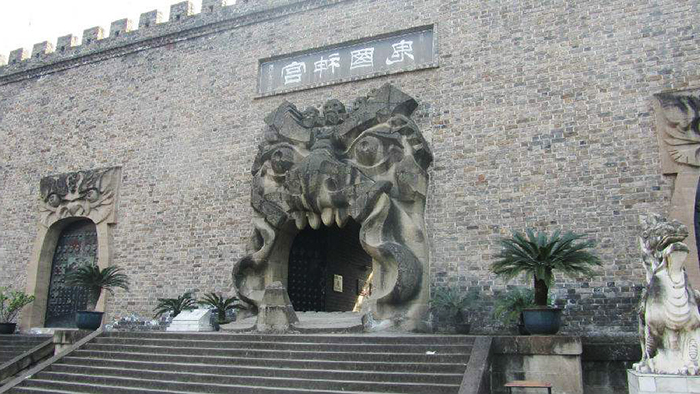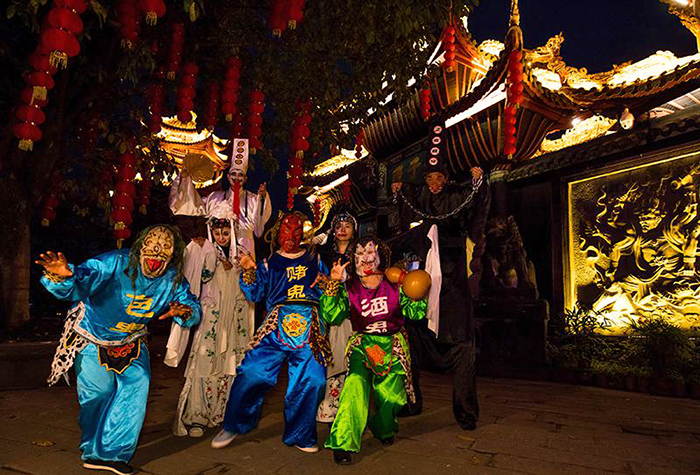
While different cultures have multifarious beliefs regarding the nature of the afterlife, one basic truth resonates through them all: good is rewarded with good; and evil punished with evil. Hidden deep within the verdant forests of Mount Ming, about 170 kilometres (110 mi) downstream from Chongqing, rests a temple complex entirely dedicated to this principle. Much like the River Styx, Fengdu Ghost City’s riverside location means it can be reached by cruise ship along the Yangtze River, although there is the option to take a slightly less magical ride into the city by bus or by car. Abandon all hope ye who decide to take a tour here, for this is the home of Yinwang, the King of Hell.
According to local legend, two imperial officials named Yin Changsheng and Wang Fangping came to Mount Ming during the Han Dynasty (206 BC–220 AD) in order to practice Taoism. After a lifetime of solitude, they achieved immortality. Over time, their association with the place and the combination of their surnames, which form the word “Yinwang” or “King of Hell”, led to the site’s focus on the underworld and the attainment of the name “Ghost City”. However, it wasn’t until the Tang Dynasty (618-907) that the vast temple complex began to be constructed. Combining features of Taoism, Buddhism, and Confucianism, this complex is made up of temples, shrines, and monasteries all dedicated to depicting the gruesome and demonic images of those who will be tortured in hell.
The site’s mystique and macabre nature meant it swiftly gained notoriety throughout the country and it has been mentioned in a number of Chinese literary classics, including Journey to the West, Investiture of the Gods, and Strange Tales from a Chinese Studio. Nowadays it remains a popular attraction, with visitors testing their morality against the notorious three trials of the afterlife. Be forewarned: the city is not for the faint of heart, as it contains vivid dioramas, statues, and murals of people being viciously tortured by demons. Whether it’s a man moaning in agony as he is sawn in half or a woman gaping in horror as her teeth are plucked out, these grotesque images are sure to inspire anyone to choose the righteous path!
Traditional Chinese belief states that, in order to successfully pass over into the afterlife, the dead must take part in three trials. The first involves crossing over the Nothing-To-Be-Done Bridge, a stone bridge that was constructed during the Ming Dynasty (1368-1644). It is made up of three arches, although only the middle one is used to test people. The other two, known as the golden and silver bridge respectively, should be crossed over on your way out of the city, as this is rumoured to bring good fortune. Different procedures are adhered to depending on gender, age, and marital status, but the main objective is to make it across the bridge.

It is believed that a good person will cross the bridge without effort, while an evil person will fall into the square-shaped pools below. In some instances, demons would block the path, allowing the good spirits to pass and pushing the evil spirits into the water. If you thought this first trial was a bridge too far, it will seem harmless compared to those ahead! During the second trial, the dead must navigate the Ghost-Torturing Pass, where they present themselves for judgement before Yama, the King of Hell according to Buddhist tradition. Along this eerie path, eighteen life-sized sculptures of demons loom at passers-by, their faces gnarled into frowns and scowls. At the end of the path, you’ll arrive at the entrance to Tianzi Palace, where the final trial awaits you.

Acting as the centre of the complex, Tianzi Palace is the oldest and largest temple on the mountain. The third trial involves balancing on one foot atop a certain stone at its entrance for three minutes. A virtuous person should be able to accomplish this task with ease, while a nefarious person will inevitably fail and be condemned to hell. Once a spirit has completed their journey, they will ascend the Last Glance to Home Tower. At the top, they are permitted to take one last look at their homes and families before passing over to the other side. That being said, this tower was only built in 1985, so anyone who died before then probably didn’t have such a good view!
As you travel through the city, you’re sure to catch a glimpse of a colossal stony face peering out of the forest on Mount Ming. This is known as the “Ghost King” and, at a height of 138 metres (453 ft.) and a width of 217 metres (712 ft.), it has unsurprisingly earned the Guinness World Record for the largest sculpture carved into a rock. Just remember, you might not be able to see him, but he’s always watching you, so behave yourself!